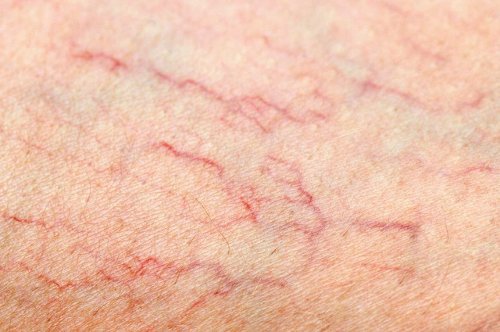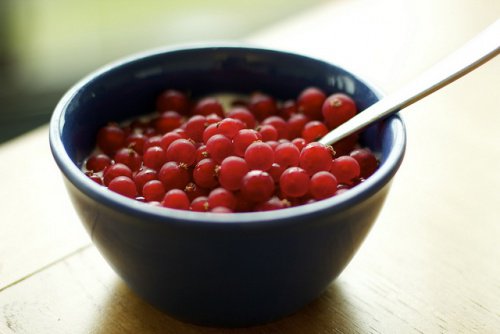What To Do If Varicose Veins Appear

In this article, we will explain what methods to take when varicose veins start appearing. This moment is key because it’s when you can prevent them, and in turn, improve your circulation and overall health.
Avoid hot water to prevent varicose veins
Although some people get cold easily, the worst thing you can do if you have poor circulation is using hot water when you take a shower.
Another thing that tends to happen when you have poor circulation is that you get colder, which is why, if you shower to warm up your body, you aren’t doing anything but making the problem worse.
However, changing this does not have to be sudden, as you should gradually cool your showers so that your body gets used to it. Once you are done showering, you can use cold water for a few moments or even alternate cold and hot, especially in the areas that are most affected by varicose veins.
You may like:
Don’t Make These 5 Common Shower Mistakes
Then, little by little, you will notice a great feeling of lightness and well-being throughout your body with this simple change.

Move everyday
In order to prevent the appearance of varicose veins or the worsening of the ones you already have, you should make a conscious effort to move every day. It is not always possible to go to a gym, but you should also avoid those lazy times of the day in which you don’t move from your chair.
Likewise, you can go up and down the stairs, walk to the places that aren’t far if you have time, do exercises or stretches at home, go on an excursion on the weekends, etc.
We especially recommend looking for an opportunity to go to the beach or mountains and walk barefoot on the sand, grass, or river. This pleasant experience is not only an excellent anti-stress remedy, but also improves circulation and relaxes your body, giving you vitality.
Also read:
Inverted position to reduce the appearance of varicose veins
You will feel such relief with this simple exercise! We spend the whole day carrying around the weight of our body on our legs, so we suggest that at the end of your day, do an exercise that does the opposite: put your legs up!
You can do it in various ways:
- Laying down, put your legs on a couple of thick cushions.
- Laying facing the wall, support your legs vertically, forming a right angle.
- Do an inverted position, supporting the weight of your body on your head or the dorsal part of your back (only those people who know this well or can consult with a trainer should do this exercise).

Fight excess weight and obesity
Being overweight aggravates circulatory problems tremendously. Therefore, if this is your case, we suggest you follow a healthy and progressive weight loss plan.
This will help you feel better, put you in a good mood, and give you more energy to face all of the challenges that we are proposing in this article.
Take care of your diet
Above all, a natural and complete treatment should act inside and outside the body. Therefore, internally, you should consider avoiding some foods like the ones we describe below:
- White sugar
- Refined salt
- Refined flours
- Fried and precooked food
- Hydrogenated fats
- Alcoholic beverages
- High roast coffee
On the contrary, the following foods can be very beneficial:
- Grapes
- Citrus fruits
- Watermelon
- Cranberries
- Garlic
- Onion
- Celery
- Parsley
- Tomatoes
- Pumpkin seeds
- First cold pressed olive oil
- Alfalfa
- Walnuts
- Ginger
- Cayenne
- Turmeric

Discover natural remedies
In order to boost this treatment even more, especially during those times of the year in which you notice poor circulation in the more affected areas, we recommend choosing a natural medicinal plant-based supplement.
It can be internal (capsules, pills, dye, extract, infusions, etc.) or external (creams, lotions, oils, gels, etc.), but they should always include some of the recommended medicinal plants to improve circulation:
- Butcher’s broom
- Rosemary
- Witch hazel
- Grapevine
- Cypress
- Centella asiatica
Cold gels are also very effective to relieve more immediate discomfort and you can easily find them in pharmacies.
Images courtesy of sparky, Fabrice Florin and Peet Sneekes.
All cited sources were thoroughly reviewed by our team to ensure their quality, reliability, currency, and validity. The bibliography of this article was considered reliable and of academic or scientific accuracy.
van Rij, A. M., De Alwis, C. S., Jiang, P., Christie, R. A., Hill, G. B., Dutton, S. J., & Thomson, I. A. (2008). Obesity and Impaired Venous Function. European Journal of Vascular and Endovascular Surgery. https://doi.org/10.1016/j.ejvs.2008.01.006
Fowkes, F. G. R., Lee, A. J., Evans, C. J., Allan, P. L., Bradbury, A. W., & Ruckleyd, C. V. (2001). Lifestyle risk factors for lower limb venous reflux in the general population: Edinburgh vein study. International Journal of Epidemiology. https://doi.org/10.1093/ije/30.4.846
This text is provided for informational purposes only and does not replace consultation with a professional. If in doubt, consult your specialist.








